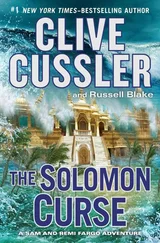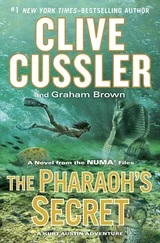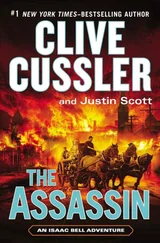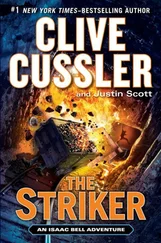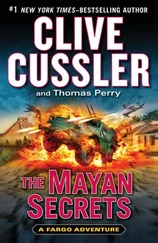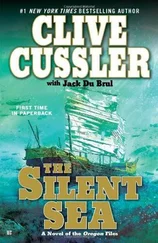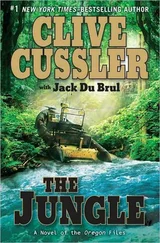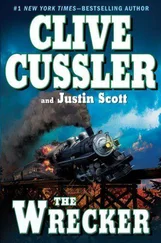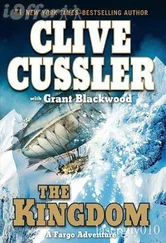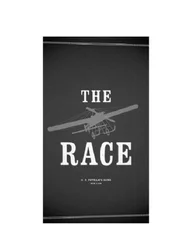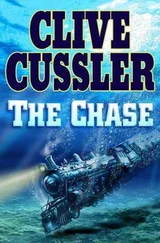“Sorry. I’m not following you,” Sam said.
“I wanted to confirm my suspicion, so I went to look at the fourth tomb. There, in the dark antechamber, I could make out carvings on the wall at nearly ceiling height — above eye level. There was no lamp, which made it hard to see, so I borrowed Antonio’s penlight. And what do you think it was?”
Sam shook his head. “GPS coordinates?”
“Ha. Close. Come. Have a look.”
He led them into the narrow stone corridor to the far tomb and stopped before entering. Remi directed her penlight beam at the carving Lazlo was pointing at. “Look familiar?” he asked.
“It’s the procession again.”
“Indeed it is. Except look closer. Do you see something that isn’t in any of the larger carvings?”
Sam stepped nearer to Remi, nodding.
“We’ll I’ll be …”
Remi looked up at Sam’s profile, realization written across her face.
“Those are planets and stars.”
Lazlo nodded like a proud father. “Yes, they are. And with the celestial waypoints, we should be able to decipher where the true location of the tomb lies.”
Back in the second tomb, Antonio gestured at the procession pictograph. “In this one, there are faint outlines of the moon and several stars, too. But almost as an afterthought.”
“Yes, as there are in one of the others. Only the constellations are as different as the drawings, I’m afraid,” Lazlo confirmed.
“Then I don’t understand. How will we know which of the depictions is the correct one?”
Lazlo stood mute for a moment, thinking. “I can’t help but believe that the repeated pictograph has meaning. I’m guessing that it’s an astronomical depiction — a clue to those who were adept at reading the stars. Maybe … Maybe the reason that the position of the landmarks is different in each rendition is because the images are representations of the same thing at different times of the year. Major events. Summer solstice, winter solstice …”
“How will we decide?” Remi asked.
Lazlo’s eyes widened. “You have images of the manuscript and the pictographs from Cuba, right?”
“Of course. But they’re back at the motel.”
“Then that’s where we need to go next,” Lazlo said.
“Why?”
“Because, if I’m not mistaken, the manuscript holds the final clue that will enable us to unravel this riddle. Remi, take another series of photos of each room’s pictographs, in order, as we’d see them if we were moving from the primary vault to the final one. Try to get them from the same angle in each. Finish with our new find in the antechamber.”
Within ten minutes, they were back in the SUV, moving down the uneven streets, back toward Teotihuacan. An hour later, they stopped at the motel and Remi ran inside, emerging moments later with a flash drive in her hand.
Once back at the dig, they gathered around the monitor as Lazlo studied the Cuban pictographs and the manuscript. Nobody said a word as he gazed intently at the images, flipping between them, before finally settling on the series from the tombs.
“The Cuban pictograph and the manuscript narrow it down to the second in the series. See the moon there? It matches the position in the Cuban carvings. The rest are red herrings, as you say in the colonies.”
“You’re correct. That’s a depiction of the moon. Faint, and I would never have noticed it with all the rest of the glyphs, but there it is,” Antonio conceded.
“Now the question is, which temple is it? The smaller one over there?” Sam said, pointing to a lower building to the right.
Lazlo didn’t say anything and then stepped back. “It’s not as hard as you think, now that we know what to look for.”
“What is it, Lazlo?” Maribela asked.
“The other symbols point the way,” Lazlo nodded. “Teotihuacan is organized in a very specific manner. The city was designed according to astronomical events. The movement of the sun, the stars, the moon — all of these played a huge role in its layout.”
“Right …”
“Look up at the sky in the carving. Above the moon. That one star is bigger than the rest. Which would make it the North Star. Polaris.”
Antonio grunted assent. “That would fit, based on other Toltec images we’ve analyzed.”
Lazlo sighed. “Now I’m afraid the really hard work comes in. We’ll need to simulate the movement of the moon and the stars until we come to a point where they fit the positions in that carving. When we do, we’ll be able to calculate the tomb’s location.”
“It may not be so hard after all,” Antonio said, and then walked them slowly through the other astronomical symbols. After conferring with Lazlo, he jotted down a few notes before typing on the laptop’s keyboard at a furious pace. They watched as he deleted one word and entered a different one into a blank search box and then pressed a series of keys.
“I have a program that will analyze the position of the moon, stars, and sun based on rough coordinates. It’ll take a while to process all this. Lazlo’s assuming that the final procession would have been at a key celestial event. Something monumental. Fitting for the burial of the greatest ruler of his time. So I entered in all the possible obvious events. The equinoxes, other alignments that are viewed in Mesoamerican cultures as significant.”
A screen popped up. He and Lazlo studied it and then overlaid it on a model of Teotihuacan. After changing the screen several times, Antonio stepped back.
Lazlo tapped the screen. “There’s your temple. The first one on the right as you face the Pyramid of the Moon.”
Remi looked to Antonio. “Have there ever been any excavations there?”
Antonio shook his head. “I don’t believe so, other than clearing the land away on the front side so you can see the temple. The secondary pyramids were considered trivial in the scheme of things, so resources went to the larger buildings.”
“Then they’ve never been thoroughly explored,” Remi said.
“We only have limited resources—” Maribela bristled.
Antonio held up his hand, cutting her off.
“I don’t think Remi is saying we’ve been negligent. I think her intent was to establish that nothing much is known about them since all the serious digs focused around the more spectacular sites.”
“That’s right. So there very well could be a tomb there. Either under it or along one of the bases,” Remi said.
“Actually, if you look at how things line up, you’ll see the rear of the temple on the axis.”
“How long is that side?” Sam asked.
“They’re all about thirty-six meters square. So almost a hundred twenty of your feet.”
“Not that much smaller than the Temple of the Feathered Serpent.”
“A little more than half the size, actually, but you’re correct that it’s a large area.”
“Let’s go over and have a look. Would we need a new permit?”
“I think as the senior functionary of INAH here, I’d say no.”
They piled into Antonio’s official Suburban and crawled the length of the Avenue of the Dead, taking care to avoid the scattered groups of tourists taking in the sights. When they reached the temple, they climbed the slope behind it, which had only been partially cleared, and stared at the rear of the smaller pyramid as if they could intuit where the lost chamber was with instinct alone.
“Call it ninety feet to excavate. But this is considerably more dirt to move. Could we get a backhoe here?” Remi asked. “Just to do the gross-level clearing and then we could have the crew take over …”
“I don’t see why not,” Antonio said. “There are numerous places in town that rent equipment and a man to operate it. Perhaps we could get one this afternoon. And with sufficient financial incentive, the man would probably be willing to work late. We might get it done in a day or so, then move in after that with the men as you suggested.”
Читать дальше

